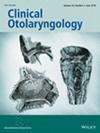A Scoring System for Predicting the Cure Rate of Unilateral Idiopathic Sudden Sensorineural Hearing Loss
Abstract
Background
Due to the clinical heterogeneity of unilateral idiopathic sudden sensorineural hearing loss, its prognosis is difficult to predict. This study aims to establish a system that could incorporate multiple factors for better prediction of the prognosis.
Methods
Seven hundred eighty-four adult patients with unilateral idiopathic sudden sensorineural hearing loss who were hospitalised for treatment between Jan 2016 and Dec 2020 were included. Pure tone audiometry hearing threshold calculated by the average value of hearing thresholds at 250, 500, 1000, 2000, 4000 and 8000 Hz was used for evaluating treatment efficacy.
Results
The final cure rate was 31.0% (232/748). Age, onset-therapy time, initial hearing level, audiogram shape, and vertigo were found to be independently predictive for the prognosis. A scoring system that could incorporate all these five factors based on their prediction weights was then successfully created. The equation of total score was as follows: Total score = 1.2 × Age (score) + 1.6 × Onset-therapy time (score) + 1.3 × Initial hearing level (score) + 2.3 × Audiogram shape (score) + 2.8 × Vertigo (score). The cure rate of patients with scores of < 5 could reach as high as 81.4%, whereas it was only 10.1% in patients with scores of ≥ 12.
Conclusions
This study created a scoring system for predicting the prognosis of unilateral idiopathic sudden sensorineural hearing loss. The cure rates decreased with the increase of score. Patients could be given more individualised treatment according to the preliminary prediction of our system.

 求助内容:
求助内容: 应助结果提醒方式:
应助结果提醒方式:


